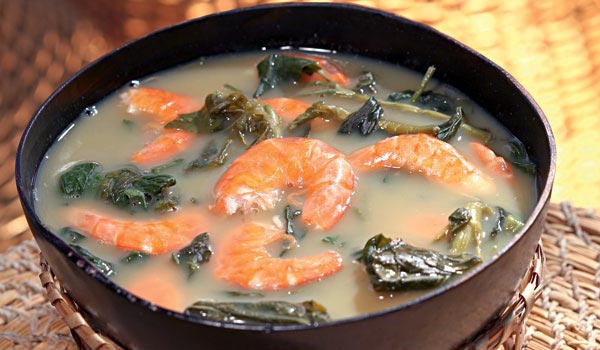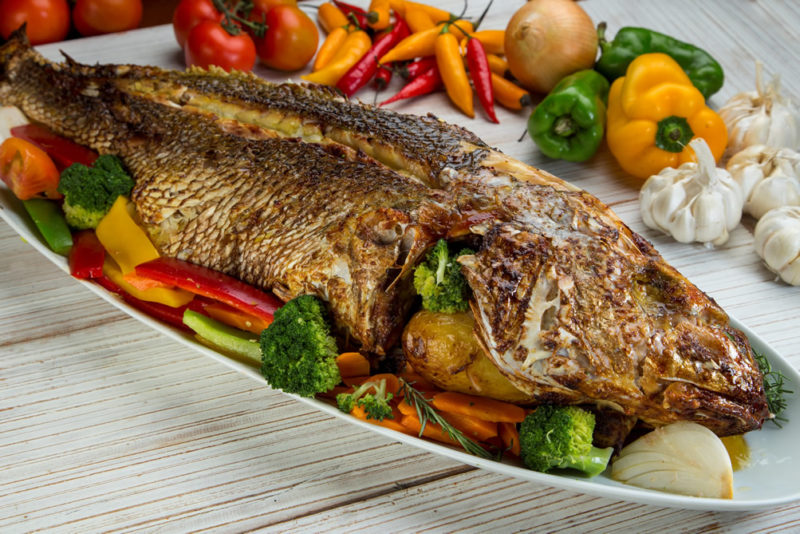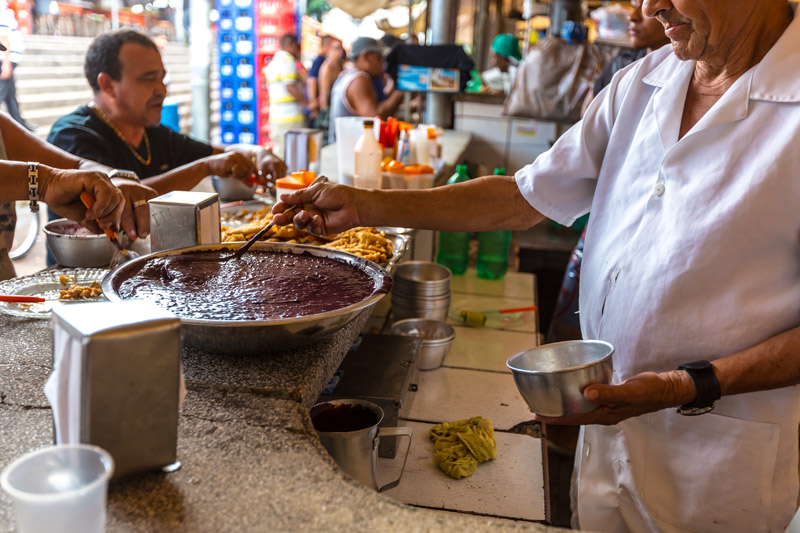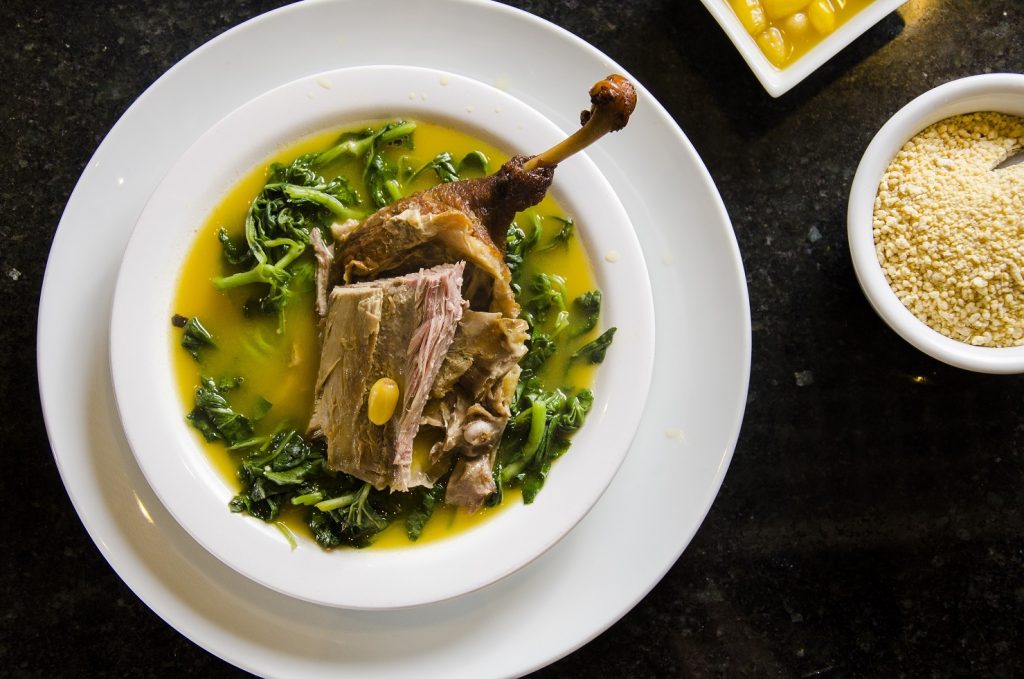In northern Brazil, the mighty Amazon River defines a landscape rich in ingredients that most of us have never even seen before. But Brazil’s vibrant cuisine is on the move—and açaí was just the first wave. So keep your ears, eyes, and mouth open and get to know and enjoy the Amazonian food that you’ll have to try when you go on one of our Amazonian tours:

Maniçoba: An Amazonian food made with pieces of meat, sausage, manioc, and chicória leaves. It is of indigenous origin, and is made with leaves of the manioc plant that have been finely ground and boiled for a week. Then, salted pork, dried meat and smoke ingredients, such as bacon and sausage, are added. The dish is served with rice and cassava meal (called “farinha”). People usually eat “maniçoba” during the Círio de Nazaré, the city’s largest religious festival that takes place in October.

Tacacá: A soup common in the states of Acre, Amazonas, Rondônia and Pará, the tacacá is made with jambu (a native variety of paracress), and tucupi (a broth made with wild manioc), as well as dried shrimps and small yellow peppers. It must be served extremely hot in a cuia, or gourd.

Fish: Given the sheer size of the Amazon River and its tributaries, it’s unsurprising that freshwater fish forms the main source of protein in the Amazonian food. The fish in the Amazon will also be fresh and flavourful and you’ll probably encounter fish in an array of forms and dishes, either grilled, fried, steamed or blended into sauces or stews. Amazonian cuisine in includes many freshwater fish such as peixe nobre (noble fish), the pirarucu, and tambaqui. Small fishes such as surubim, curimatã, jaraqui, acari and tucunaré are also eaten. These smaller fish are often grilled and/or fried. Fish dishes are usually served with tomato sauce, prepared in coconut milk or stewed in tucupi (a sauce made with fermented manioc juices).

Fruit. One of the staples of Amazonian cuisine is fruit. Juices and ice creams are made from them, including acerola, graviola, fruta de conde and cupuaçu. Juices are also made from palm trees such as taperebá, buriti and bacuri. And of course there is açai. Did you know that this Amazonian superfood, which has gained popularity worldwide, originally hails from Brazil? In its home country, the incredibly healthy and versatile açai is served in a number of different ways, but we recommend that you go old school and eat açai as they do in the Amazon – as an unsweetened puree topped with puffy pieces of tapioca.

Pato no tucupi. A local and traditional favourite (especially during the holidays), the duck served in exotic-tasting tucupi sauce, is roasted, shredded and cooked with garlic, chicory, basil and tucupi, and then served over rice with hot pepper and a touch of fermented manioc flour.





